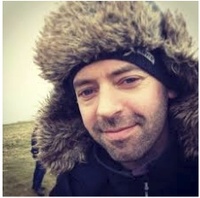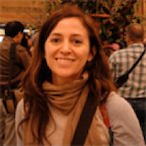Applying Computer Vision and Graphics Research in Visual Effects and Entertainment

The visual effects and entertainment industries are now a fundamental part of the computer graphics and vision landscapes - as well as impacting across society in general. One of the issues in this area is the creation of realistic characters, creating assets for production, and improving work-flow. Advances in computer graphics, vision and rendering have underlined much of the success of these industries, built on top of academic advances. However, there are still many unsolved problems. In this talk I will outline some of the challenges we have faced in crossing over academic research into the visual effects industry. In particular, I will attempt to distinguish between academic challenges and industrial demands we have experienced - and how this has impacted projects. This draws on experience in several themes involving leading Visual Effects and entertainment companies. Our work has been in several diverse areas, including on-set capture, digital doubles, real-time animation and motion capture retargeting. I will describe how many of these problems led to us step back and focus on first solving more fundamental computer vision research problems - particularly in the area of optical flow, non-rigid tracking and shadow removal - and how these opened up other opportunities. Some of these projects are supported through our Centre for Digital Entertainment (CDE) - which has 60 PhD level student embedded across the creative industries in the UK. Others are more specific to partners at The Imaginarium and Double Negative Visual Effects. Attempting to draw these experiences together, we are now starting a new Centre for the Analysis of Motion, Entertainment Research and Applications (CAMERA), with leading partners across entertainment, elite sport and rehabilitation.
Speaker Biography
Darren Cosker (University of Bath)
Darren Cosker is the Director of CAMERA - a £10 million EPSRC/AHRC funded Centre for the Analysis of Motion, Entertainment Research and Applications (from late 2015). He is also a Reader(UK)/Associate Prof. (US) at the University of Bath, and Royal Society Industry Fellow with Double Negative Visual Effects (DNeg http://www.dneg.com/) in London, where his aim is to investigate new facial capture and animation techniques for Visual Effects (VFX), and to encourage and foster cross-over between academic research and industry. At Bath, he is a member of the Centre for Digital Entertainment (CDE) and the Media Technology Research Centre (MTRC). His research lie in the convergence of Computer Vision, Computer Graphics and Psychology - particularly in relation to human motion analysis and synthesis. He received a BSc in Computer Science with Honours from Cardiff University in 2001, and a Ph.D in Computer Science from Cardiff University in 2006. His thesis explored the synthesis and perceptual analysis of visual speech.
